October 25
We set off at 6 AM for the Bonda market, in Onkudelli, a drive of some three hours. The market happens every Thursday., and also attracts gaddaba,didaye,Mali and Raina tribes. On the road, we pass four men toting heavy double loads of firewood.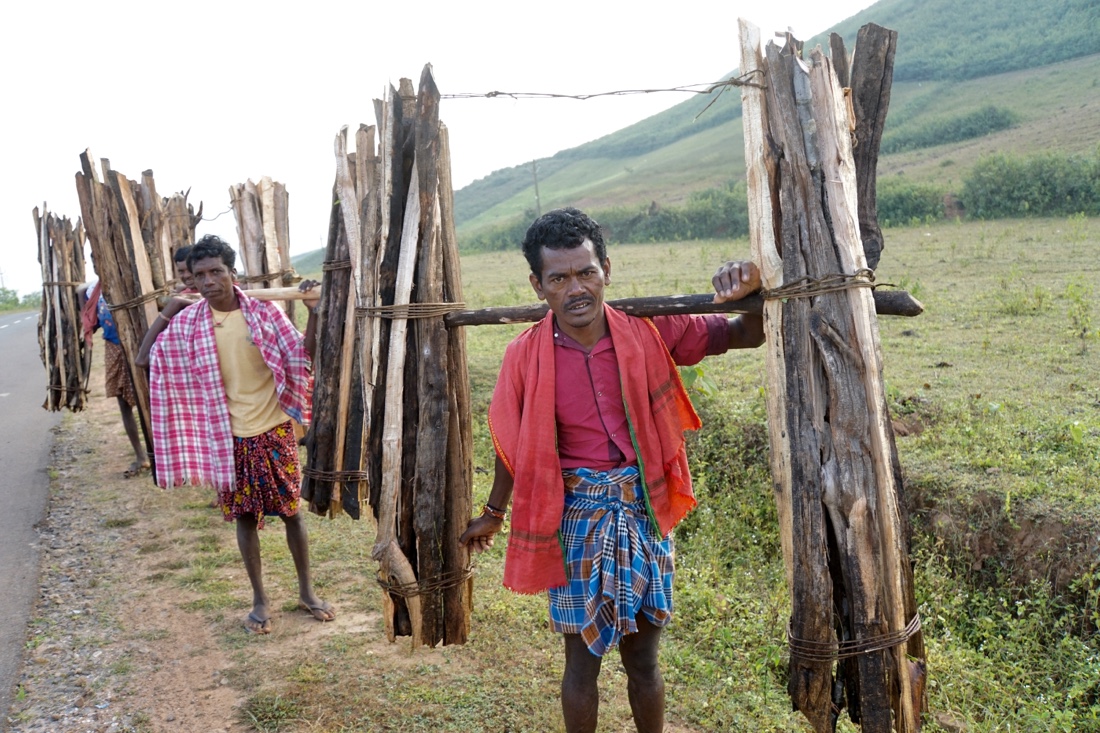
There are approximately 6000 members of the Bonda Tribes–one of the most fascinating tribes of India. They live in the remote hills and keep themselves totally isolated. They grow rice by shifting cultivation and keep domesticated cows and goats. They can only be seen when they come to trade at the local weekly Thursday market.
In Bonda society, the women enjoy a privileged position. They are the primary workers and providers of food for the community. Bonda girls largely marry boys who are at least five to ten years younger than them. Thus the girl looks after her husband as he grows up and in turn he cares for his elder wife. In contrast with many other populations in India, the number of women among the Bondas greatly exceeds the number of men.
The Bonda are generally semi-clothed, the women wear thick silver neck bands. The Bonda attire is explained in a legend relating to the Ramayana. According to it, some Bonda women chanced upon Sita who was bathing at a pond in the Bonda hills and, seeing her naked, they sniggered. Enraged, Sita cursed them to a life where they would be condemned to remaining naked and having their heads shaven. When the Bonda women pleaded forgiveness, Sita gave them a piece of cloth she tore off her Sari.
Bonda women have their heads shaved and adorned with two types of headbands, called turuba and lobeda. The turuba is made of grass and the lobeda made of beads.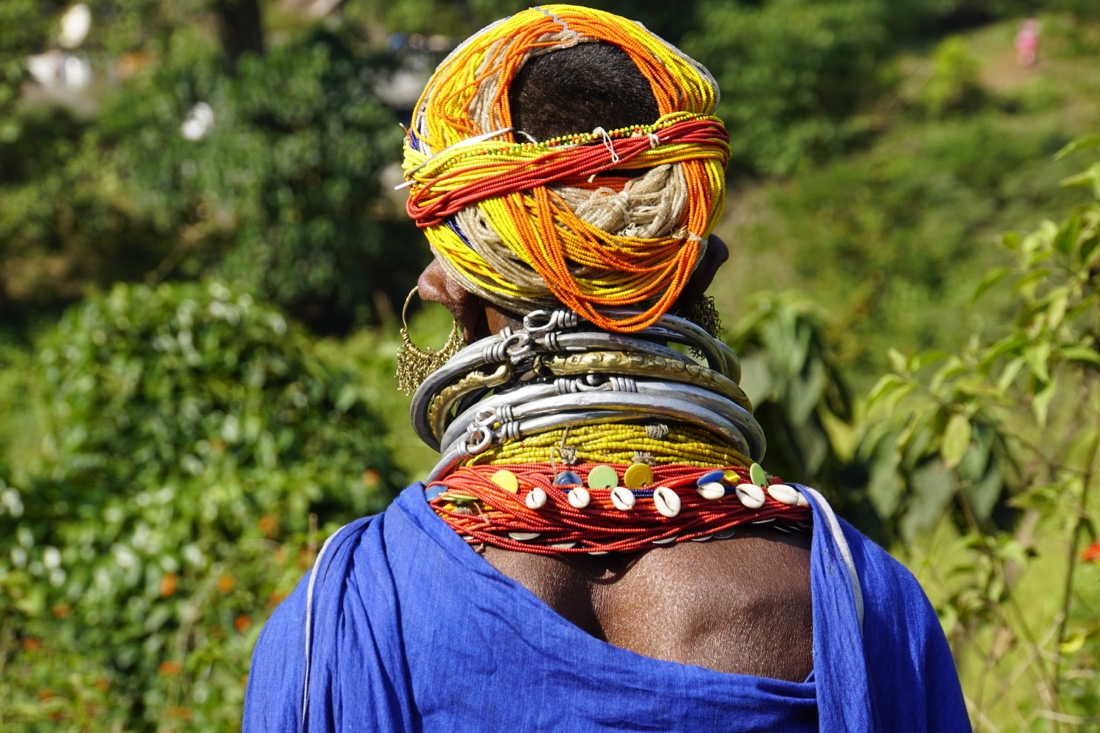

They wear only a ringa, a length of cloth that covers the waist. Their torsos are covered in strings of colourful beads. Bonda women also wear metal rings that cover their necks, which are called khagla and are made from aluminum, and bangles on their arms. 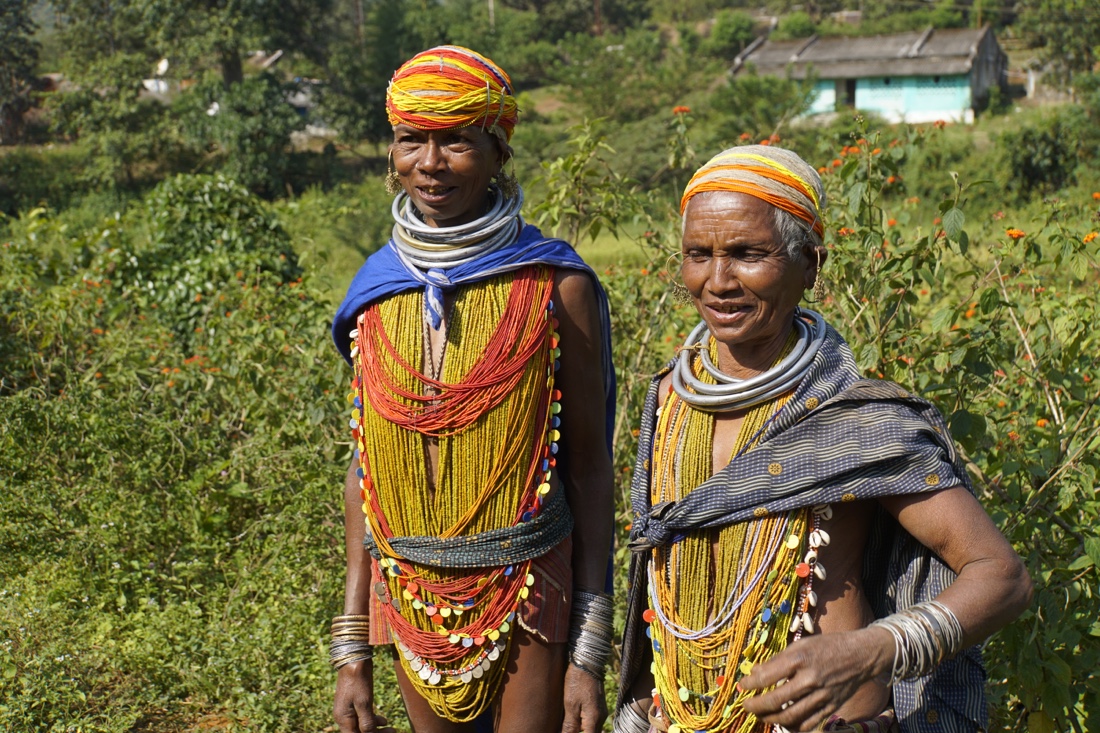
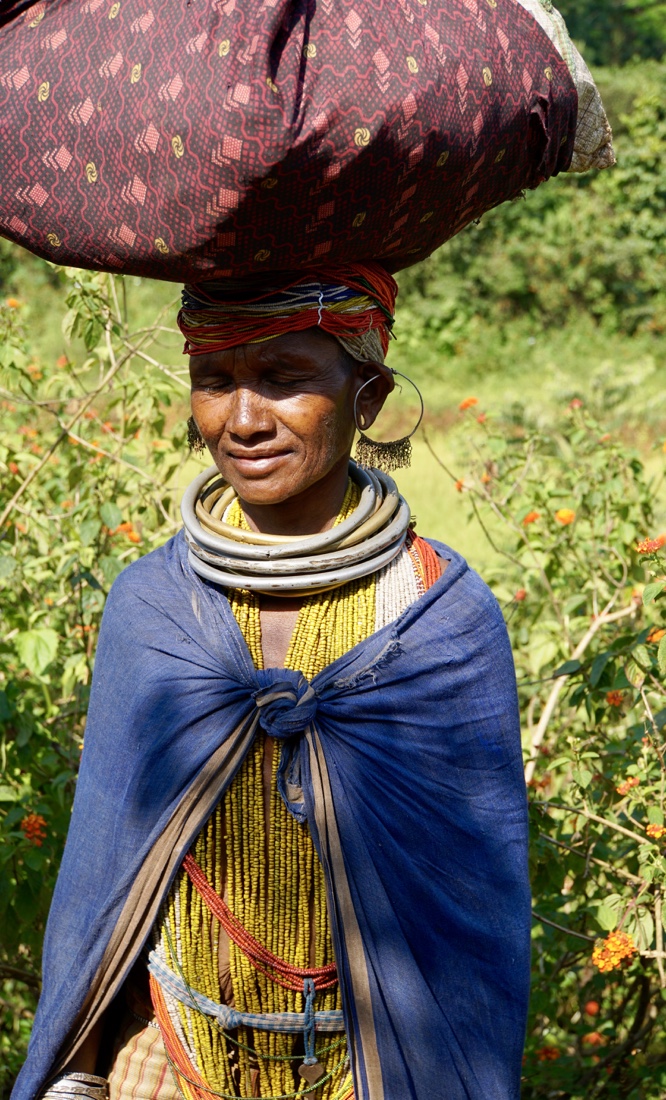
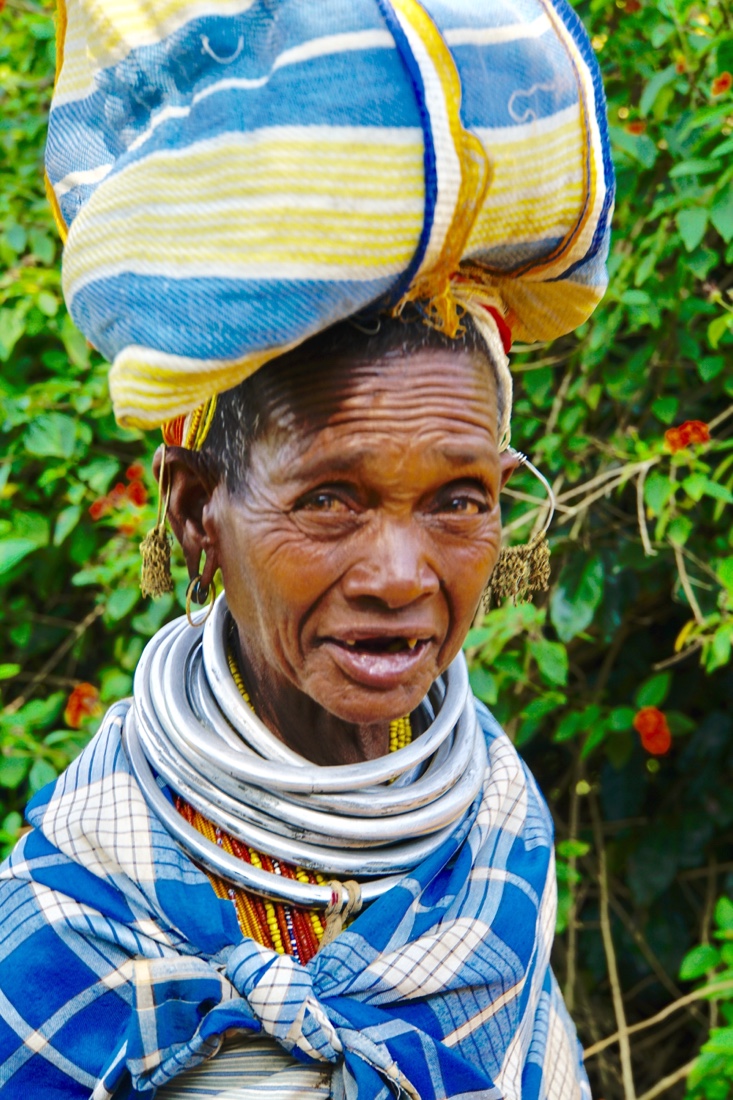

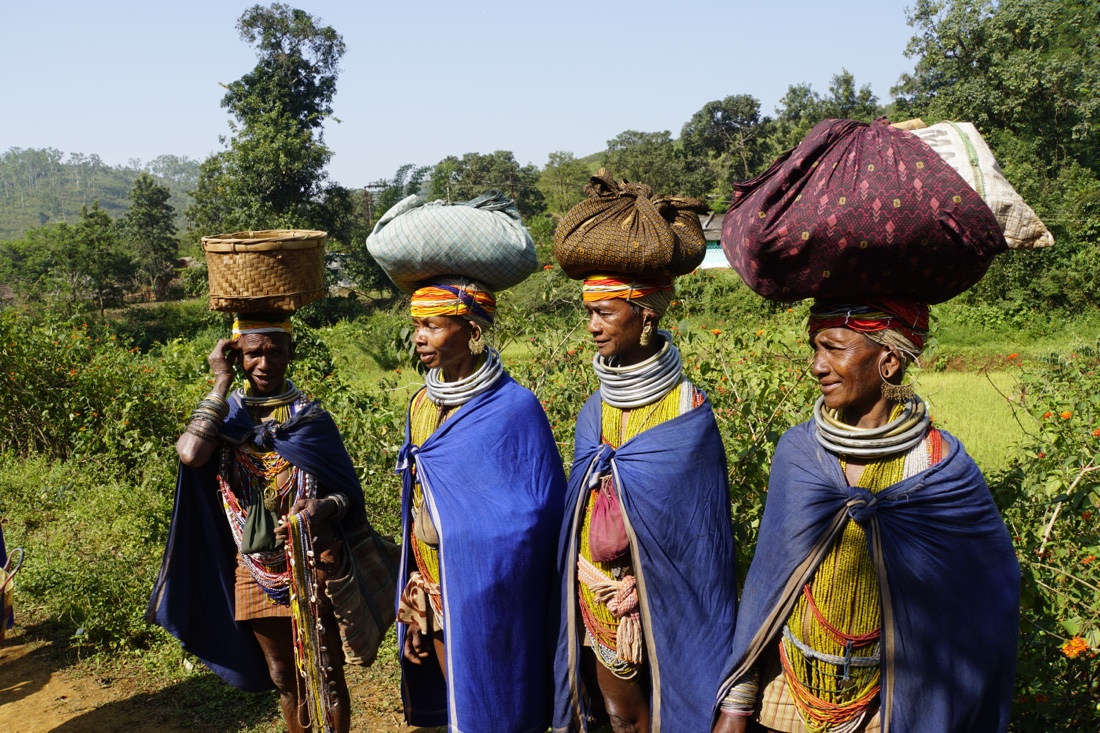 Since Bonda women hunt and forage for food in the forest, it is thought that these ornaments have a function of protecting them from injuries and attacks by wild animals. Necklaces made of beads are also worn, these are called Mali. Due to the culture surrounding their ringa cloth which covers the waist down, the khagla and Mali act as a sort of clothing for the upper body of the women.
Since Bonda women hunt and forage for food in the forest, it is thought that these ornaments have a function of protecting them from injuries and attacks by wild animals. Necklaces made of beads are also worn, these are called Mali. Due to the culture surrounding their ringa cloth which covers the waist down, the khagla and Mali act as a sort of clothing for the upper body of the women.
For bachelors or newly married men, it is customary to wear their own set of ornaments. Beginning at the ages of eight or nine, males will adorn their bodies with headbands, bangles ,necklaces ,earrings. Once married, men typically do not continue to adorn their bodies. The men are a good deal less interesting and photogenic.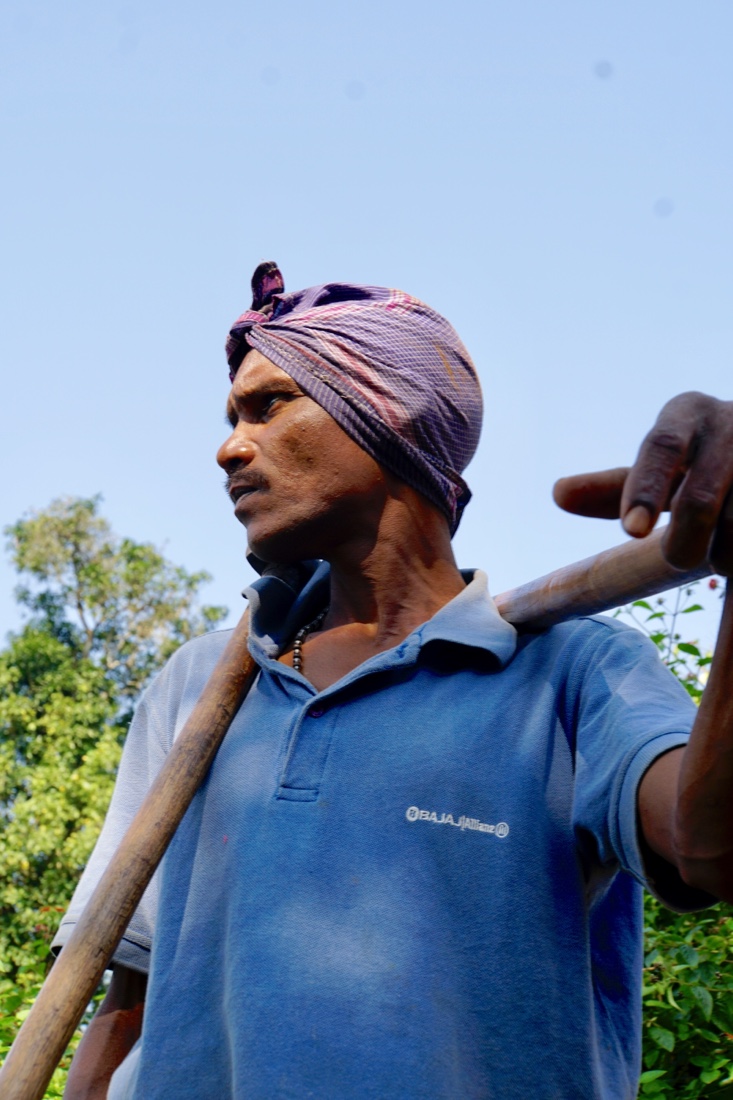

 It is fascinating to see the Bonda women, who are very friendly and quite willing to pose, especially whe Prasant slips them a few rupees. Best is to see them walking down to the market from the hills.
It is fascinating to see the Bonda women, who are very friendly and quite willing to pose, especially whe Prasant slips them a few rupees. Best is to see them walking down to the market from the hills. 


 The market itself is, well, a market, and not markedly different from many other markets I’ve seen.
The market itself is, well, a market, and not markedly different from many other markets I’ve seen.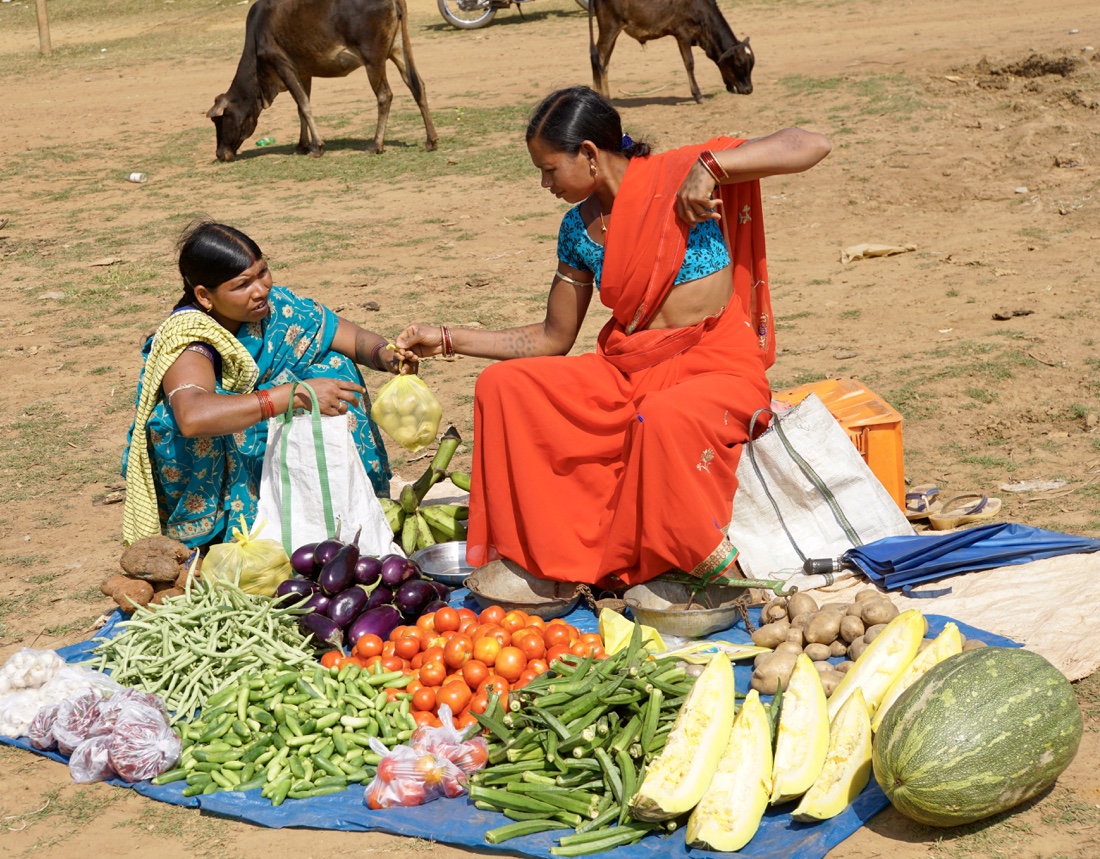
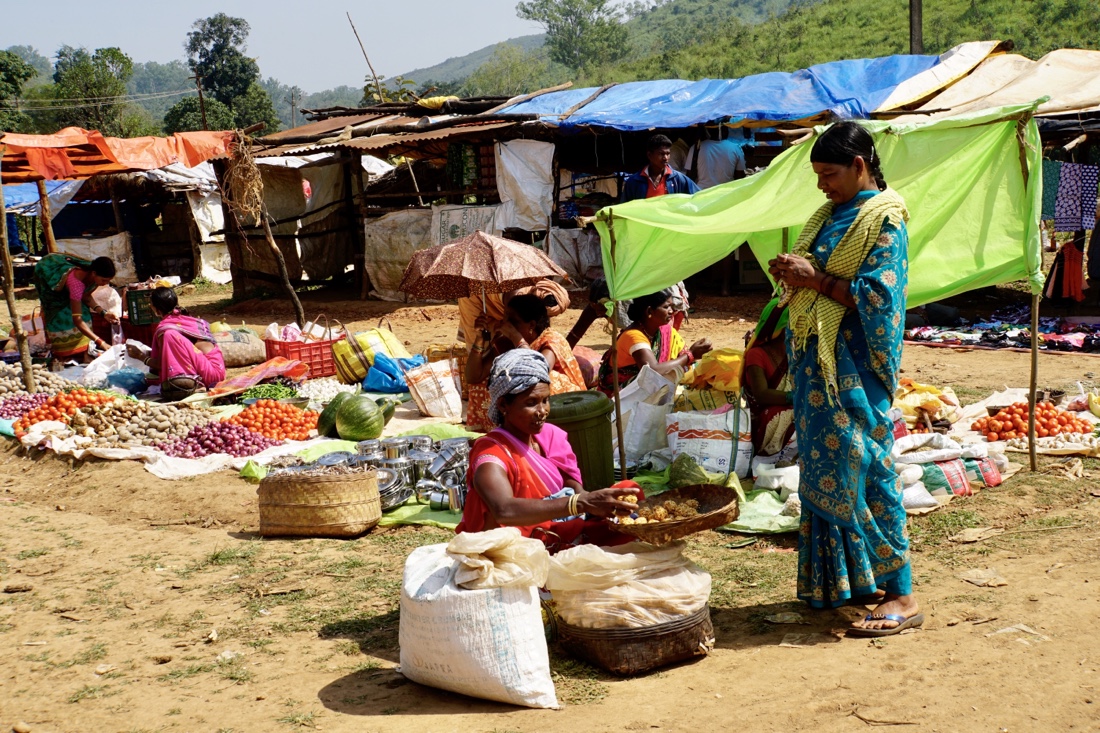
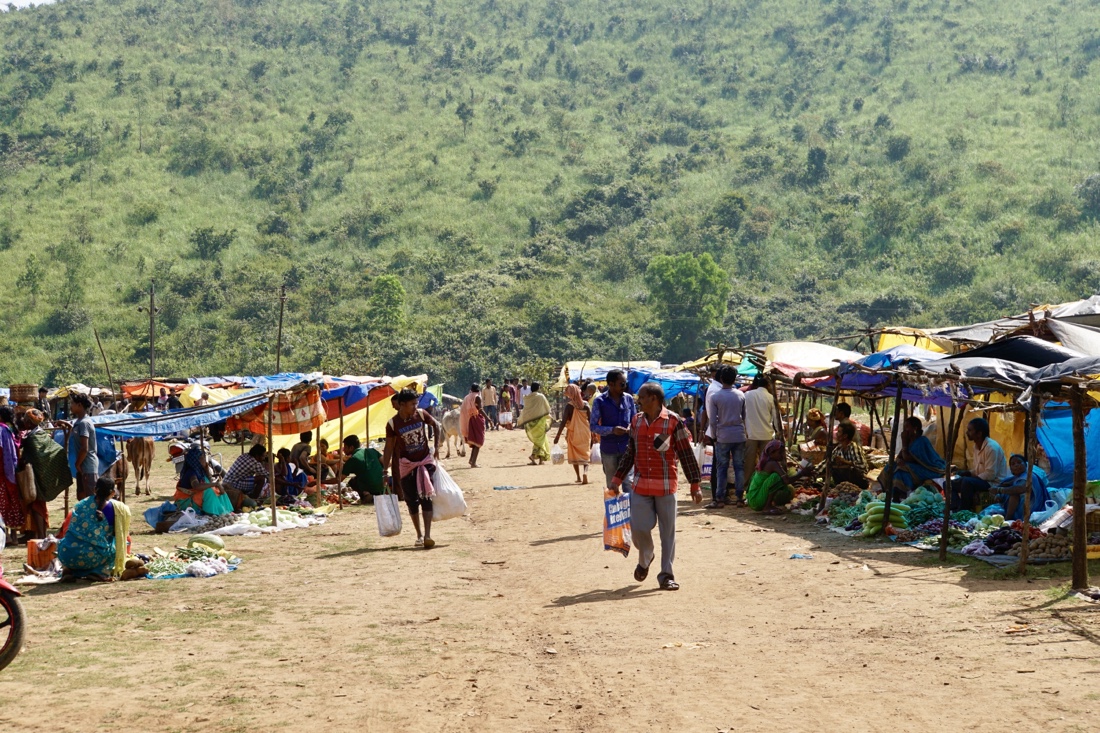 From the market we go a village of the boro gaddaba tribe in bahiripada. At the entrance to the village is a shrine to the goddess, represented by rocks in keeping with their animist beliefs.
From the market we go a village of the boro gaddaba tribe in bahiripada. At the entrance to the village is a shrine to the goddess, represented by rocks in keeping with their animist beliefs.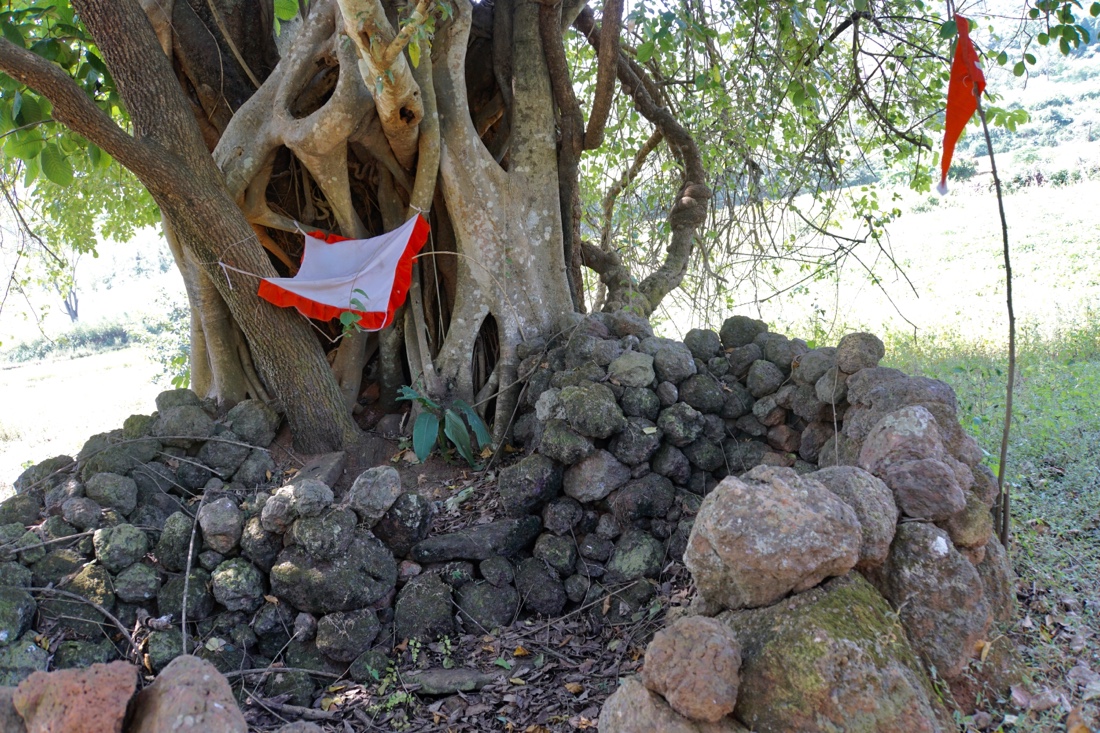 Even in the smallest villages, color abounds.
Even in the smallest villages, color abounds. Though I’ve now been to many of these villages, I still love to walk through them, observe the lifestyle and photograph people.
Though I’ve now been to many of these villages, I still love to walk through them, observe the lifestyle and photograph people.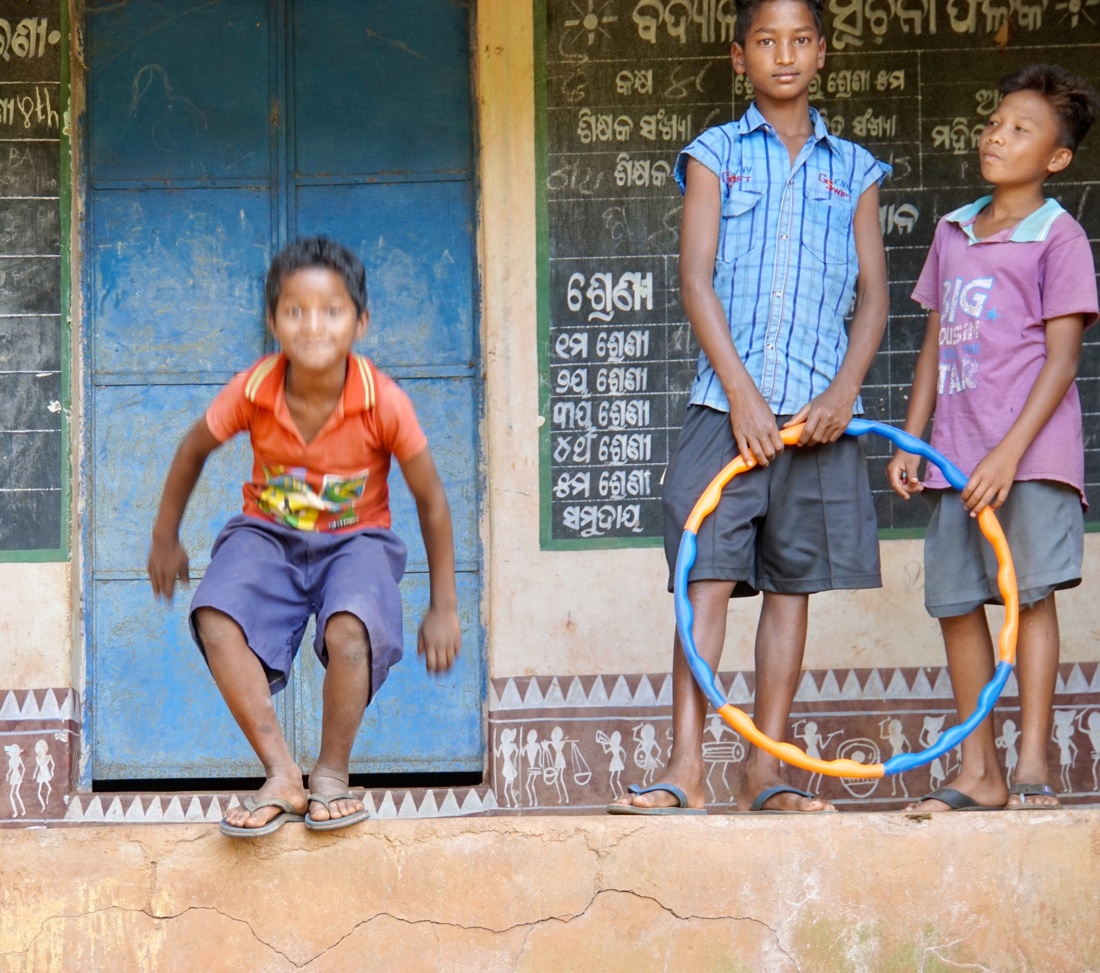

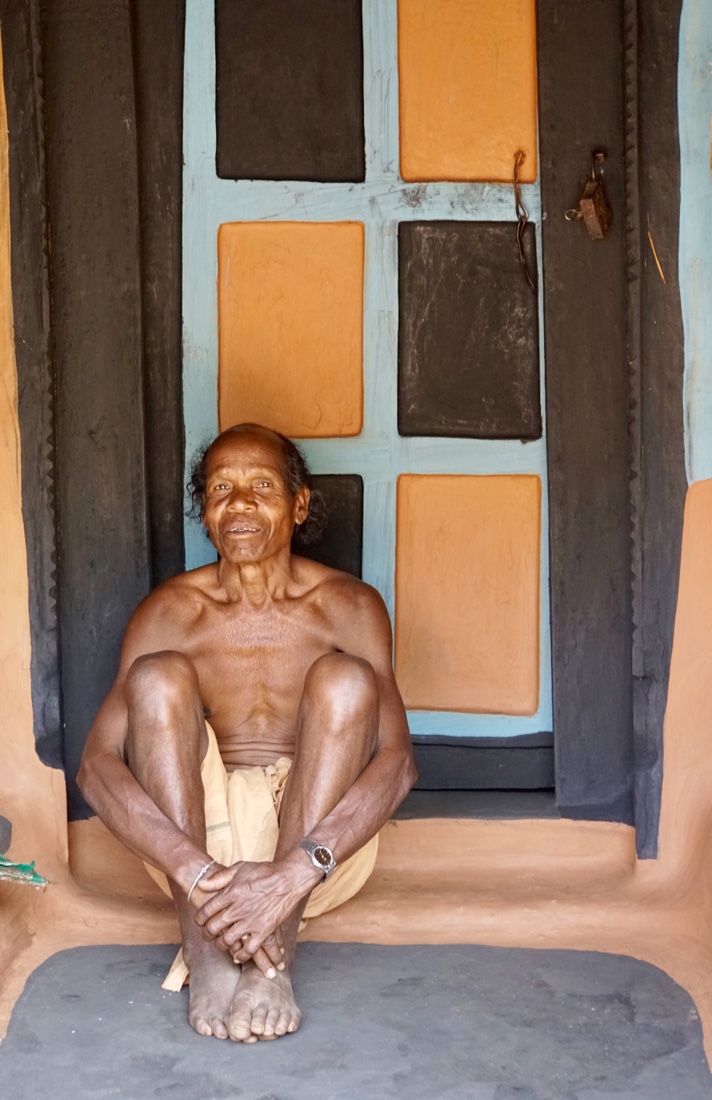
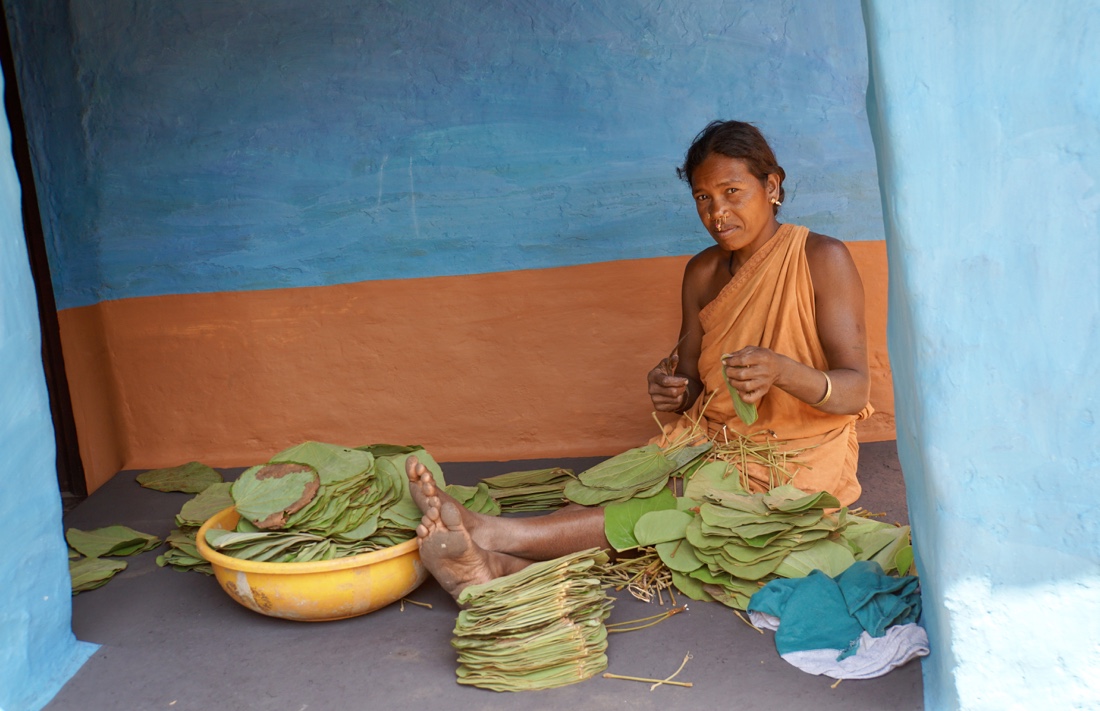
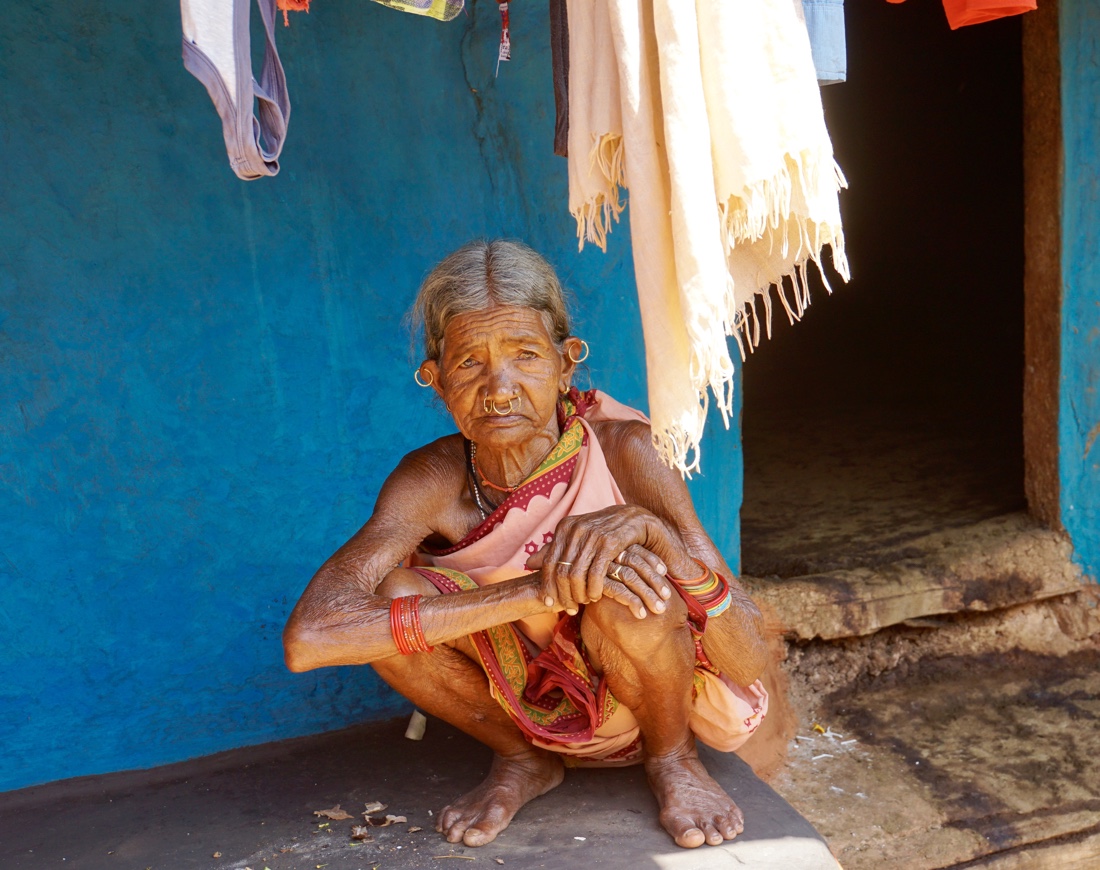

We have lunch at the same restaurant we did a few days ago, and again it is very good. Prasant asks if I want to go to another village, but I am exhausted, because I was up most of the night exchanging emails with my US travel agent to deal with the way Air India had totally fucked things up (to use the technical airline term). Ultimately, she got things sorted out, but not before some anxious moments, including a fear that Air India might cancel my Delhi-Chicago flight. It’s going to be an extremely frigid day in hell before I fly Air India again.
I get a few hours of badly-needed sleep before dinner, where I sit with the Spanish couple and a group of seven Swiss, led by a woman who is Swiss, but was born in India.

Arnie what an interesting post and photos.
Honestly you just get better and better.
Truly amazing.
I love following your blogs! Thank you!
Stunning photos, Dadz!
What an opportunity to see remote villages. So happy for you. Photos are fabulous.
Thank you.
Fabulous photography and interesting commentary. Who would have known all that you say about the lives of people we’d otherwise know nothing about?